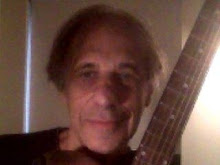Chapter 23: With Andrea Eagan and Newsreel, 1970 (iv)
By working in the Newsreel office and hanging out around the Falks’ East 15th St. house in February 1970, a few weeks prior to a March 1970 Women’s Day march and a New Haven women’s demonstration in support of the imprisoned Black Panther Party activists, I was able to converse with both Bev and Lala at length.
Bev had grown up on the West Coast and been some sort of childhood performer. In the 1960s, she had married a musician with whom she developed a male chauvinist relationship, which included her getting battered by him on occasion. After moving East and rebelling against the oppressiveness of her marriage situation, she split from her husband and began working in the Movement in the late 1960s. In early 1970, she was in her late twenties and one of the politically strongest women in Newsreel’s Third World community outreach caucus and in Newsreel’s women’s caucus.
Bev was about average height, had long dark hair, always wore jeans and was very sweet, warm and good-natured—if she liked your politics. Like Lynn, she seemed both militantly idealistic and militantly anti-sexist in her politics, as well as revolutionary socialist. Unlike Lynn, Bev wasn’t a radical filmmaker, but was primarily an activist-organizer at this time.
In early 1970, Bev was also studying some karate in order to better protect the space around her from cops, rapists, and male chauvinists. One Sunday morning, I stopped by the Newsreel office to pick up some films for a screening and I noticed that Bev looked quite fierce in her karate suit, as she practiced punches and kicks on the big punching bag that had been set up for the self-defense class that was being held in the Newsreel loft. Bev’s fighting spirit and her affectionate nature appealed to me. In cold weather, she usually wore an army jacket.
Lala was as tall as Sara, but seemed physically and psychologically stronger and much less traditionally “feminine.” She had been a Go-Go dancer in D.C. and a “hippie-chick” who “balled” a number of men, while stoned on psychedelic drugs, in emotionally meaningless ways.
“I remember one night in D.C., when I was balling this guy while on acid, that it all became clear to me. Unless you’re able to be totally self-reliant and totally independent emotionally, you’ll never be free. I realized that I had to learn to live totally alone without getting lonely, in order to be both a revolutionary and free,” Lala advised me in the Falks’ house on East 15th St. one night.
In early 1970, Lala was working and living with Siegel. Siegel was closer to the New York Panthers on a personal level than the other Newsreel filmmakers and Lala seemed even closer to Weatherman in her political views than was Lynn. Lala was more militantly anti-racist than Lynn, but less willing to equate sexual oppression of women with what she felt was the more intense racial oppression experienced by African-Americans. Like Bev, Lala was also learning some karate.
Of all the Newsreel women, Lala seemed the most impatient to make the Revolution, the toughest and the one most willing to actually begin waging armed struggle, as soon as possible. She reminded me somewhat of Bernardine. In early 1970, Lala was writing articles for the underground newspaper Rat, under the pseudonym “One White Woman,” which stressed the idea that Movement people’s practice was more important than their rhetoric; and that U.S. radical women should prepare themselves to escalate the level of resistance to the U.S. war machine, in support of Vietnamese and Black Panther Party women activists.
Although by early February 1970 I had fallen madly in love with Florrie, I was also extremely fond of Lala and felt very close to her politically. Like Lala, I felt the need to resist hip capitalist rock cultural rip-off artists by having the Movement utilize non-commercial rock street bands at its various Hotel Diplomat fund-raising benefits. When Lala helped organize a late February 1970 “Free The Panther 21” benefit at the Hotel Diplomat, I referred her to a street band in which a musician from High School Student Union circles, named Reggie, was featured on lead guitar.
James and the Twenty-Seven Bicycles
14 years ago



No comments:
Post a Comment